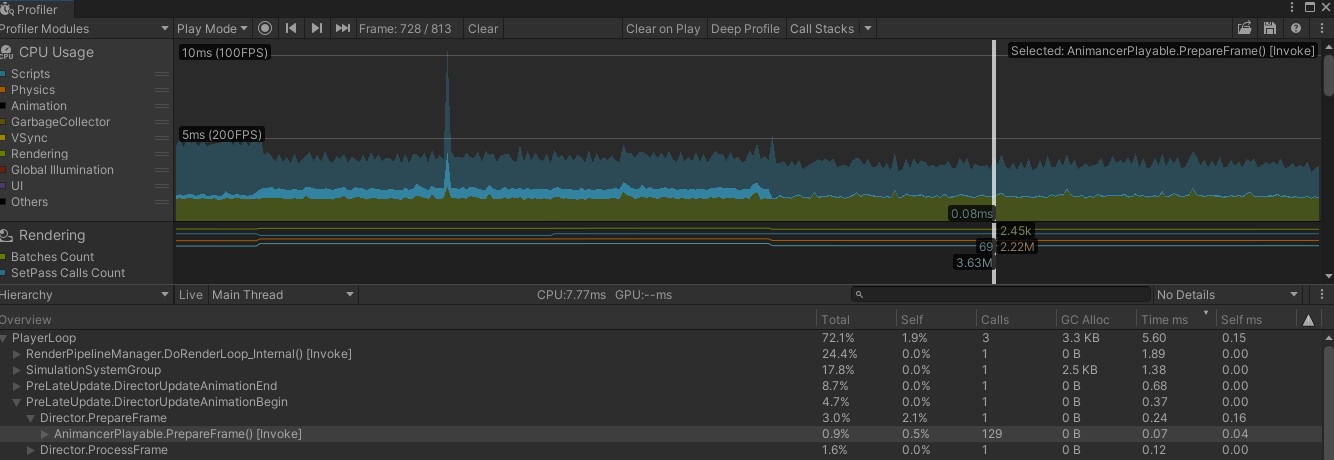Disconnecting weightless playables from their parent usually improves performance (see the Connected vs. Disconnected table here). But for Mixer Synchronization to work it needs to keep all the mixer's children connected and continually modifies their speed to sync their time (because setting the time has other side effects like skipping events).
Having the whole mixer inactive while playing something else shouldn't have any performance cost though (except memory usage obviously). I'll need to look into that.
Also, you might want to check out Animancer v7.4 which has significant improvements to the way you can initialize mixers in code.
Environment
Description
It seems inactive
LinearMixerStatenodes are still processed causing a large performance loss with scenes with a high number of active Animancer components. This has been observed by wrappingUpdateAll(_PreUpdatables, info.deltaTime * info.effectiveParentSpeed);with a profile sample and by observing theLinearMixerStatenodes withinprivate void UpdateAll(Key.KeyedList<IUpdatable> updatables, float deltaTime). Shouldn't these nodes be removed from_PreUpdatables? Its strange because the playableGraph does remove these nodes when they are inactive.Reproduction
Spawning 128 characters with this code requires 0.60ms to process the inactive
LinearMixerStateeven though the idle state is playing. Replacing this node with aAnimationClipimproves performance bringing the cost down to 0.07ms.With the mixer
Without
Graph of time of profiling
Code snippets: